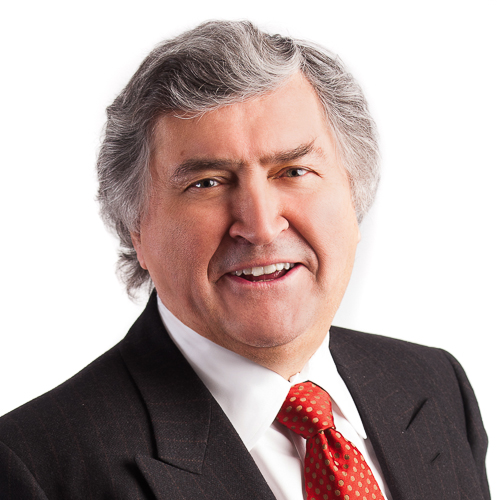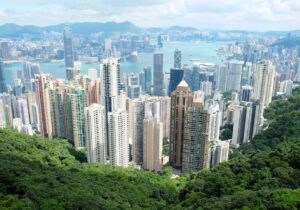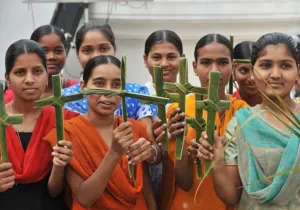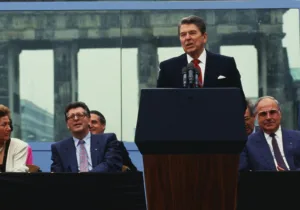Across Washington DC, Pride flags are being displaced by the Chakra of the flag of India. Indian Prime Minister Narendra Modi is on a state visit to the U.S. and is being given high honors, including a welcome on the south lawn of the White House, a state dinner, and an address to a joint session of Congress—something rarely granted to visiting foreign leaders. President Biden has given such honor to only two other world leaders: France’s Emmanuel Macron and South Korea’s Yoon Suk Yeol.
It is no secret why Modi and, through him, India, is being given such a welcome. The country is now the world’s most populous, is expected to be the fastest-growing G20 economy over the next few years, and is becoming increasingly important to the U.S. strategically, militarily, technologically, and economically. To this may be added India’s increasingly influential diaspora.
Strategically, the U.S. hopes that India can be a counterweight to its massive neighbor, China. India will of course pursue its own interests, not America’s, and seek to avoid excessive entanglement with the U.S. But there is much mutuality of interest. China and India have fought each other in one major war, the Sino-Indian War of 1962, and have had several other large military conflicts over their disputed Himalayan border. China lays claim to the entire Indian state of Arunachal Pradesh, which it includes on maps as part of China, and which it calls “South Tibet.”
India is also, along with Japan, Australia. and America, a member of the Quadrilateral Security Dialogue, usually called simply “the Quad.” This informal strategic forum has become more active in seeking to achieve its goals of maintaining regional security, ensuring freedom of navigation, and fostering economic development. It has conducted joint military exercises and is developing critical technology standards.
India is also rapidly developing its infrastructure and technology, particularly IT, and perhaps aerospace, and is becoming a sought-after market. As one example, at the Paris airshow this last weekend, Indian carrier IndiGo made an order for 500 Airbus A320 aircraft – at $55bn the largest single purchase by any airline in the history of commercial aviation. IndiGo’s orders from Airbus now total 1,330 aircraft. In February 2023, Air India, IndiGo’s rival, placed an order for 470 aircraft from both Boeing and Airbus. During the Washington visit, Biden and Modi are likely to approve a major contract for General Electric to produce hitherto-restricted fighter jet engines in India itself.
Then there is India’s diaspora. Ethnic Indians are likely the wealthiest ethnic group in the United States and Merrill Lynch categorizes more than 200,000 Indian-Americans as millionaires.1 They are becoming increasingly influential not only in business but as donors and politicians. Unfortunately for President Biden, they tend to be more active in Republican politics (a similar phenomenon is occurring in conservative UK politics, with ethnic Indians in high positions, including the Prime Minister).
Hence, laying out the red carpet for India’s leader while celebrating India’s real achievements would be a plus for both leaders. In fact, it is rumored that such political considerations have on occasion influenced Washington’s doings, perhaps even extending to foreign affairs.
So, what’s to lose?
Quite a lot, actually, owing to the ideological movement of which Modi is the titular head.
The Prime Minister probably owes much of his electoral success not to a particular ideology but to his comparatively strong economic record. James Carville’s asseveration that “It’s the economy, stupid” also shapes Indian voters. But there are deeper and darker currents.
India’s Constitution enshrines secularity, but leaders in the ruling Bharatiya Janata Party (BJP) espouse an ideology of Hindutva (loosely ”Hinduness”).2 The Party is linked to groups such as the paramilitary Rashtriya Swayamsevak Sangh (RSS), Bajrang Dal, and the Vishwa Hindu Parishad, often collectively referred to as the Sangh Parivar. The RSS can be among the first to offer help after natural disasters, but its militants can also show extreme intolerance, including violence against religious minorities, and maligning writers and artists. Many senior officials, including current Prime Minister Narendra Modi, are or have been RSS associates.
Hindutva ideology can be distinguished from Hinduism itself. It demands neither a theocratic state nor Hinduism as a state religion. It is national-cultural rather than religious, and self-identifies as the soul of India itself. Sangh Parivar militants maintain that religious minorities, including Muslims and secularists could support Hindutva and if they do not, they are betraying the nation.3
With rising intolerance, there have been attacks on Muslims, Christians, and Sikhs. The most horrific instance was the 2002 killing of some two thousand Muslims in Gujarat after Muslim mobs were accused of having set fire to a train carrying Hindu nationalists, killing 58 people. Modi was chief Minister in Gujarat and, whether he actively encouraged violence or was merely a passive observer, he was barred from entering the United States for 10 years over his governance.
Attacks against Christians are widespread and escalating. Most recently, in the last two months, there have been savage attacks on Christians in the state of Manipur. The roots of this violence are complex, involving different scheduled and non-scheduled castes (very loosely, groups to which different affirmative-action rules apply), hill tribes and lowland peoples, and different ethnic groups. But these ethnic groups also have differing majority religious adherents and, as in much such violence, the religious dynamics radicalize. One report from the site states:
“There are clear indications that it is an anti-Christian pogrom. More than 200 churches have been destroyed. Churches belonging to the Meiteis in Imphal have also been destroyed. Meitei Christians have also been attacked. It is politically convenient to call it an ethnic cleansing but the fact is that it is aimed at destroying, if not eliminating, the Christian community in the state. Let there be no mistake about it. We visited St. Paul’s Church where every inch of the structure had been destroyed. They systematically used gas cylinders to destroy churches and homes of Christians.”
As of last week,
“More than 130 people have died in the state, and another 60,000 displaced from their homes. People have ransacked 4,573 weapons from police armories and destroyed 250 churches. So grave is the situation that many residents have chosen to escape to neighboring Myanmar, where the ruling military junta is conducting aerial bombing campaigns against its own citizens.”
Modi’s visit comes in the midst of this violence.
Is this then simply a conflict between human rights concerns and realpolitik, idealists vs realists? Must American national interest require turning a blind eye to the dangers of Hindutva?
In reality, the either-or framing of these two concerns is simplistic since they are overlapping. As we have learned from the Middle East and elsewhere, radical religious ideologies shape political regimes, and in turn these regimes shape foreign policy. America has made necessary alliances with many regimes much worse than the BJP’s, most notably and importantly Stalin’s Soviet Union. But such arrangements have been short-term, not long-term foundations for alliances such as those needed for balancing China.
India and Pakistan, two nuclear powers, have already engaged in several wars and if India follows a religious ideology comparable to and opposed to the radical Islamist currents in Pakistan, that situation could worsen.
The potential impact of Hindutva does not necessarily end at India’s borders. Some Hindu nationalists believe that an accurate map of India should include Nepal, Bhutan, Afghanistan, Pakistan, and Bangladesh, and have campaigned to rewrite Indian textbooks to reflect this. If this sentiment grows and results in an expansionist foreign policy, India will be more likely to clash again with Pakistan and other neighbors, including China.
Raising religious freedom and human rights matters with India is not only a humanitarian concern but is also rooted in the question of whether a potentially important ally will become increasingly intolerant and thus volatile.
Endnotes:
- Christopher Hancock and Rahil Patel, ”‘Fighting for India’s soul’: hope, hate and the Citizenship (Amendment) Act 2019 (CAA)” Oxford House Paper, June 2020; Jasa Macher, “Hindu Nationalist Influence in the United States, 2014-2021: The Infrastructure of Hindutva Mobilizing,” May 2022, released via sacw.net. This latter report is essentially anonymous but its sources are public and accessible.
- Here I am drawing on my “The Hindutva Threat Outside India,” European Eye on Radicalization, University of Leiden, December 5, 2022, https://eeradicalization.com/hindutva-outside-india/.
- For background, see my The Rise of Hindu Extremism (Washington: Freedom House, 2003).







 Sponsor a student for Christianity & National Security 2024
Sponsor a student for Christianity & National Security 2024